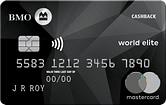Your debt-to-income ratio is the measure of how much of your gross income goes towards paying your monthly debts.
You won’t typically need to provide this number for a credit card application, but it will impact how much you can qualify for if you’re seeking a personal loan or mortgage. Lenders want to know how much you can reasonably afford to pay back each month if they loan you money.
Here's what goes into your debt-to-income ratio, why it matters, and how to calculate it.
Key Takeaways
- Your debt to income ratio shows how much of your income goes towards paying your debt.
- If it's higher than 0.36 it may be harder to get approved for loans or a mortgage.
- Other factors that go into getting approved for loans include your credit score and income.
Never miss an amazing deal again + get our bonus 250+ page eBook for FREE. Join 50,000 other Canadians who receive our weekly newsletter – learn more.
What is debt-to-income ratio – and why does it matter?
A debt-to-income ratio (DTI) is how much of your gross income (i.e., before taxes) goes towards paying your monthly debts.
Lenders use this number to see if you can take on more debt. If it's already high, you likely won’t be able to secure a loan or mortgage. The generally accepted cutoff is 0.44. A DTI higher than 0.5 can indicate that you're living beyond your means.
Remember: Lenders look at more than just your DTI when you apply for a loan. A high debt-to-income ratio won't necessarily block you from getting a loan, but it can make it more difficult to get approved.
Related reading: Credit card debt in Canada
How to calculate debt-to-income ratio
Debt-to-income ratio might sound complex, but it’s a very simple snapshot of your finances and there isn’t much math involved. You’ll just need some information about your income and expenses.
- Monthly income before deductions: Income from jobs, alimony or child support, pension or retirement benefits, social assistance benefits, government assistance
- Monthly debt payments: Monthly rent or mortgage(s), monthly car payment, monthly student loan payment, medical and dental bill payments, alimony and child support payments, monthly credit card and line of credit payments
Note that you’re only listing the monthly expense, not the overall debt. So, if you have a hefty credit card balance, you don’t use the whole balance – just the minimum monthly payment.
It should only take you a few minutes to find information. If you have a monthly budget, you probably already have a good idea of your income and expenses.
Debt-to-income ratio = monthly debt payments / gross monthly income x 100
Debt-to-income ratio example
Seeing an example can help make sense of DTI. Let’s start with the easiest part. You know your only source of income is your paycheque, which earns you $5,000 per month before any deductions.
Next, you add up all your debts. You might pay rent, a car payment, and your credit card's minimum monthly payment. All those add up to $1,500.
DTI = monthly debt payments / gross monthly income x 100
DTI = 1,500 / 5,000 x 100
DTI = 0.3 x 100
DTI = 30%
What's a good debt-to-income ratio?
When it comes to DTI ratio, lower is better.
If you're applying for a mortgage, you'll want to keep it at or under 0.36. This number will increase once you start paying the mortgage – so if it's already high at, say, 0.43, you may not be approved.
The magic number will vary by lender and there’s no real way to know until you apply for a mortgage or loan.
In our example above, we're in pretty good shape with a ratio of 0.3. As a personal example, the first time I applied (and was approved) for a mortgage, the mortgage advisor at the bank stated he wanted the ratio after the mortgage to be around 0.43.
How to reduce your debt-to-income ratio?
There are 2 ways you can reduce your debt-to-income ratio:
- Increase your income
- Reduce your debt payments
Let's take our example above. If we find $500 worth of debt savings every month (say the car loan is gone or we took advantage of a balance transfer offer), the new number looks like this:
DTI = 1,000 / 5,000
DTI = 0.2
Going the other way, say we got a raise at work and the new monthly income is $5,500. Here's the new debt ratio (with the original $1,500 debt).
DTI = 1,500 / 5,500
DTI = 0.27
Other factors that impact loan approval
Your debt-to-income ratio isn’t the sole factor in whether you’re approved for a loan or mortgage.
The biggest one is your credit score and history. From your report, a lender can evaluate whether or not you've been able to pay all your bills on time or have had bankruptcies or consumer proposals in the past. This is also where they'll get the information on your debts.
There are a few other things that can affect your approval:
- Your income, which is tied to your debt-to-income ratio
- Size of your down payment for mortgages and car loans
- Your financial assets, like a home or car
Do you know your debt-to-income ratio?
Have you considered your DTI ratio in the past? Has it impacted your ability to get a loan?
Share your experiences with us in the comments.
FAQ
What is the maximum debt-to-income ratio for a mortgage?
The number will vary by bank. If you're applying for a new mortgage, the generally accepted ratio is around 0.36.
Is 20% a good debt-to-income ratio?
A 20% or 0.2 debt-to-income ratio is a very good ratio. It won't be an issue when you apply for a loan or mortgage.
What happens if you have a high DTI?
If you have a high debt-to-income ratio, you may find it harder to get approved for any loans. A DTI of higher than 0.5 can indicate that you're living beyond your means.
What are the factors to calculate a debt-to-income ratio?
There are 2 basic factors to calculating a debt to income ratio. The first is to get your annual gross income (before any deductions). The other is to add up your debt bills every month (including any credit card balances). Divide the debt by income to get your ratio.
creditcardGenius is the only tool that compares 126+ features of 231 Canadian credit cards using math-based ratings and rankings that respond to your needs, instantly. Take our quiz and see which of Canada's 231 cards is for you.









 GC:
GC: 














.png)





















 $100 GeniusCash + Earn up to 15,000 Welcome Bonus Membership Rewards® Points.*
$100 GeniusCash + Earn up to 15,000 Welcome Bonus Membership Rewards® Points.*
Comments
Leave a comment
Required fields are marked with *. Your email address will not be published.